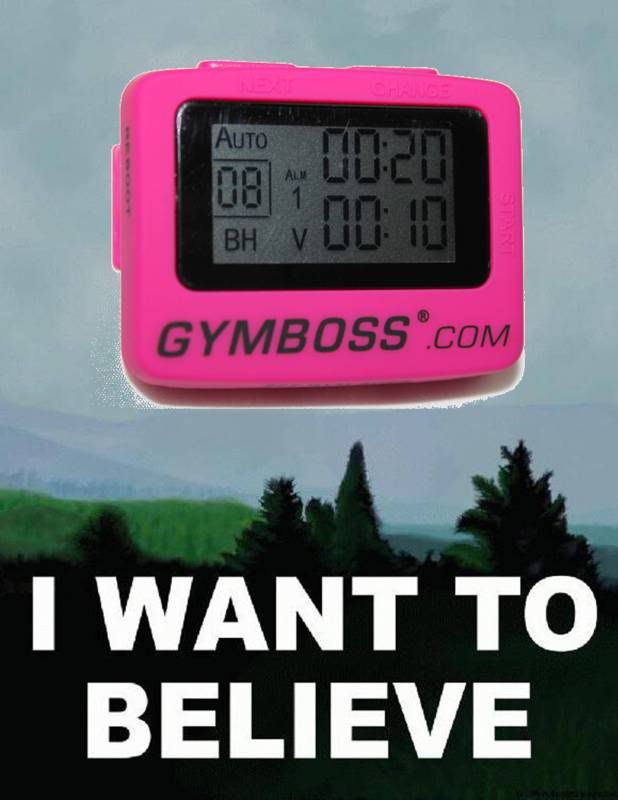"You keep using that word. I don't think it means what you think it means." – Inigo Montoya, The Princess Bride
A while back, I posted about Bodyweight Training and how it's morphed into routines that incorporate all sorts of external loads and resistance. These things aren't bad. Not at all. Just don't call it Bodyweight Training and you're good. But call it that, and you either limit yourself by sticking to "pure" bodyweight, or put a target for mockery on your back when you start to add bands, sleds, and weighted vests.
I didn't say it in the blog post, but if you choose to train for something (Kettlebell Sport, Surfing, Crossfit, Powerlifting, etc), rather than choose to train with something (kettlebells, bodyweight, barbells, etc), you might be better off. Hockey players train for hockey, they don't just "train with a hockey stick."
My flashback to that recent blog post is over, and today's blog post will be blessedly short and sweet as a result of all that wasted time on the past.
Tabatas
People love to do Tabatas for fat loss. Tabata front squats, Tabatas on the Elliptical, Tabata circuits, Bodyweight Tabatas, Tabata This!, Tabatas with eight different movements, Tabatas, Tabatas, Tabatas!
Question: What is the Tabata's purpose?
Answer: Increasing one's VO2max
The Tabata Protocol was developed as part of a study on increasing VO2max, nothing else. It has nothing to do with fat loss. In addition, the intervals were done on a Schwinn Airdyne bike, where you can really go all out. Pushups, front squats, the elliptical trainer, and swings just aren't the same. In fact, the tougher the exercise is to setup or perform, the more complicated the circuit, or the more skill it takes, the less effective it's likely to be. Pushups on three medicine balls, a circuit that changes exercises every round, or movements that are so heavy that you can only get in a few reps are typically poor choices for "tabatas." How many fewer reps will you get because you have to concentrate hard, get into position, or balance?
The protocol in the study was very specific; in each week they performed FIVE days of "tabatas," each day with 7-8 twenty second all out sets, then another day of steady state at a high level. Are you doing all that?
 |
| ...that Tabatas are good for fat loss |
Instead of Tabatas for fat loss, try:
- The Prowler
- Barbell complexes
- Eat less food
- Going for long walks
- Kettlebell swings
- Hill sprints or other intervals with a positive rest to work ratio
The Prowler – I think pushing and pulling heavy things is a very primal feeling. It's historically natural "work." It provides cardio and strength benefits AND little eccentric work, meaning less soreness tomorrow.
Barbell complexes – A barbell complex is using a barbell to do a circuit with it, usually without having to put it down. It will be fairly light, so you can do it fast and with a lot of reps, then rest and repeat for a few more rounds.
- backsquat
- overhead press
- romanian deadlift
- bent over row
Eat less food – I'm not saying to do this. You may already be eating very little. But do look at your diet and be honest with yourself. If you're still eating ice cream and hamburger buns, look to stop that before worrying about Tabatas.
Going for long walks – Walking is a low stress way to add more activity. It doesn't wear you out or make you hungry for yet more food. Try some walking this Monday.
Kettlebell swings – Virtually everybody reading this needs more glute work, and swings are one the best ways to get that. It doesn't matter whether you swing like a Kettlebell Sport guy or an RKC, but swing you should. If you only have a light kettlebell, learn to go one handed, and switch before form is compromised. For those on the cusp, here's Neghar Fonooni showing you how to put some one handed work into the mix when the bell feels heavy.
The lighter the kettlebell, the longer the work set. When I use a 16kg kettlebell, I can swing for several minutes straight. There's nothing wrong with swinging a kettlebell for several minutes straight, just keep in mind that it's more like cardio, and less like an interval. For an interval effect, make sure to pick a weight that's challenging for you and your glutes!
For kettlebell swings, I tend to prefer timed sets, rather than reps. Try 30s two handed swinging, 1 minute resting, repeat 4-6 times. Or, if the bell is lighter, try 30s left hand, 30s right hand, 1:30 minutes resting, repeat 4-6 times. It doesn't have to be 30 seconds, just pick a time that's challenging for you without compromising form. When in doubt, set the bell down and use this new time as your interval time.
Hill Sprints and other positive rest period intervals – A positive rest period interval is the flip side of the Tabata, which has a negative rest period. A positive rest period is one that is longer than the work period before and after it. Thirty seconds of work with one minute of rest qualifies as a positive rest period. Twenty seconds of work with a ten second rest period is negative.
Here's a good article on the pitfalls of negative rest intervals (like a tabata workout) by Strength Coach Robert dos Remedios. It's a good read, but here's a quote from Dos.
I know that most people cannot do continuous high intensity sprint workouts for 30 min. etc. so we need more practical protocols. This being said my general rule of thumb is ALWAYS choose some sort of positive rest period. AT LEAST work with EQUAL work-rest periods.I listed some of the best exercises for fat loss up above, but I think hill sprints are my favorite because they are safer than regular sprints, take no real equipment, they are a real test of mettle, and seem to be pretty self regulating.
 |
| Happy to not do tabatas? |
- Go to the base of a hill
- Sprint up the hill
- Walk down the hill
- Rest if necessary
- Repeat 4 or 5 times
You have options
These are just a few of the many options for incorporating more "fat burning" exercises into your routine.
I remind you that only high level athletes do enough overall work to out exercise a bad diet. Focus on cleaning up your intake before you add too much extra output. Maybe Tabata Push-Aways?
Want more 'genius' from me? My current writing, blogging, and complaining is found at TheFitInk.com. See you there!


Tabata bodyweight training with sandbags :) I like this post; recently read how someone did tabata planks --- OH MY!
ReplyDeleteThis is an absolutely brilliant post. Nice to read something from some one who:
ReplyDelete1) has been there
2) reads and understands
3) writes well and is not shilling something
For someone who can't really run as such (arthritis in my knees) but has plenty of access to hills - do you think it's possible to do 'hill sprints' effectively by just pushing all out walking up the hill as fast as possible? Because those would be quite easy for me to manage since I live on a hill on top of a hill on top of a hill anyway. :)
ReplyDelete(Running is just too jarring for my knees/ankles, even in good shoes - I can do it when necessary, but I worry about relying on it as part of my fitness plan just because of potential wear and tear on already grumpy joints.)
Gal – I've been Tabata typing all morning!
ReplyDeletePeter – Thanks! That is much appreciated!
Pirate – Walking up a steep hill is a good alternative. I would also suggest a rowing machine if it doesn't hurt your knees. KB or DB Swings should be low impact and done with soft knees and a focus on the hips and glutes vs "squatting." Swings shouldn't hurt most knees if done correctly. Shouldn't...
What's the story on the arthritis? Often dietary changes seem to make this much better. Not for all, but since there's no downside to eliminating potentially problematic foods and increasing potentially beneficial ones, it could be worth trying. Sometimes it can help with other goals (fat loss, etc) as well.
Roland